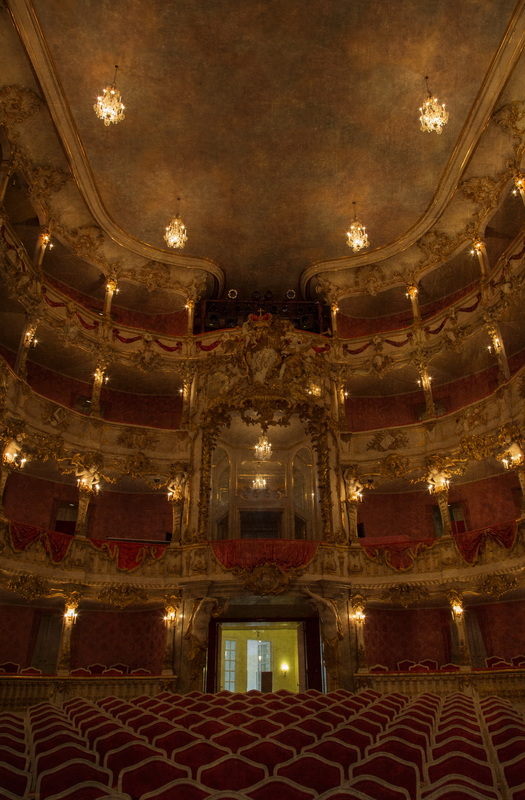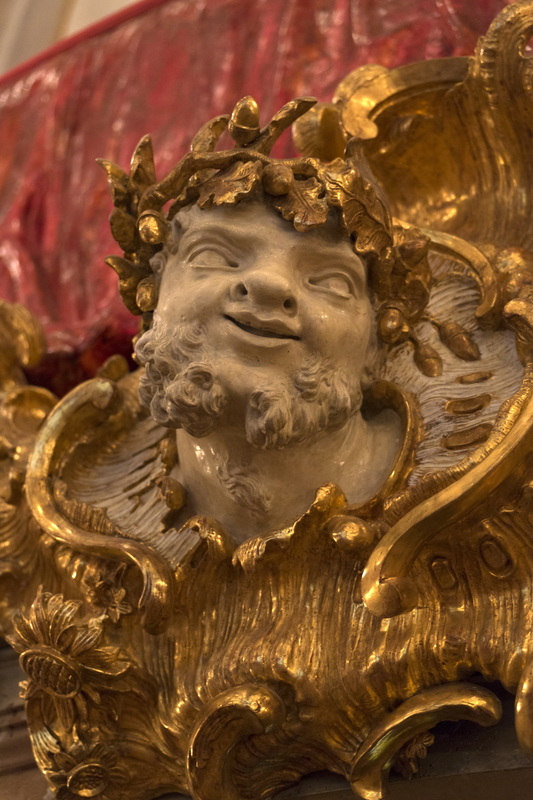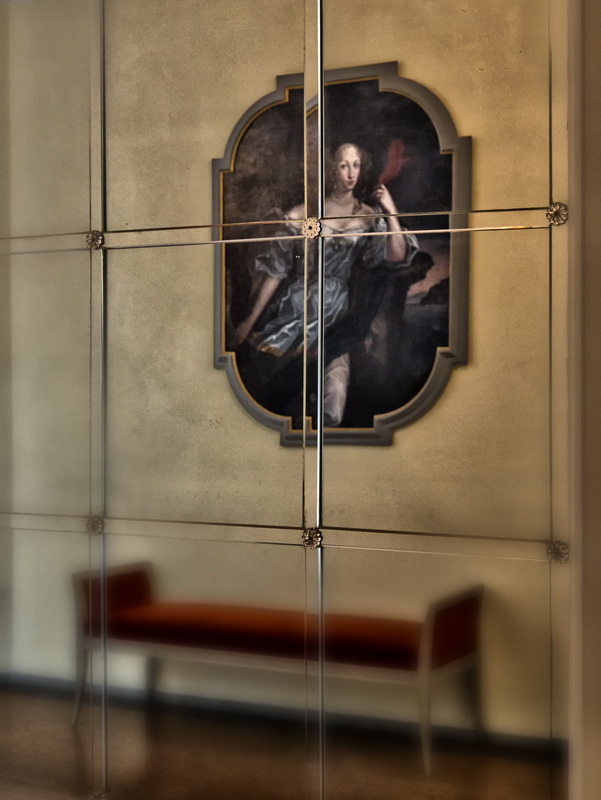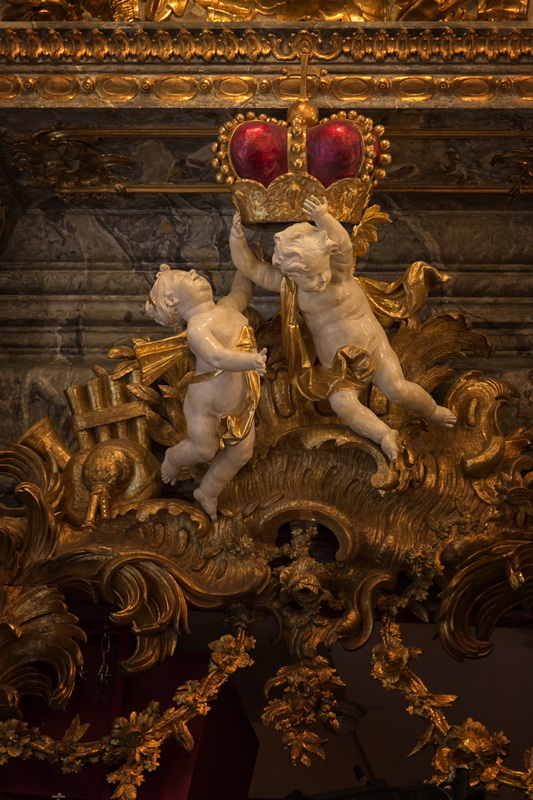For the true flower of German Late Baroque, or Rococo, one must visit Munich's Cuvillies Theater. In 1781 the premiere of Mozart's Idomeneo was staged here under the musical direction of the 25-year-old composer himself.
Francois de Cuvillies, court architect, was commissioned to add a theater to the palace of the Elector Maximilian III Joseph. Some of the best craftsmen in Germany were appointed to assist him, including the notable painter Johann Baptist Zimmermann.
The seating in the elaborately ornamented tiers and loges reflected the levels of courtly and aristocratic society. Boxes for the nobility were the most richly decorated. The ornament was gradually reduced for the seating of the gentry and court officials and the relatively simply furnished ground floor was reserved for the urban aristocracy.
One of the two Atlases which support the centrally located loge reserved for the Electoral Prince
Atlas supporing the central loge
Candles, which were used in Mozart's day, were not extintguished during the performance. Theater was not confined to the stage, the audience was part of the pageant.
Elaborate detail reflects the exuberance of the Rococo ornament.
The court society of the Baroque era was highly oriented toward its own representation and staging. Mirrors provided the audience with a view of themselves in well appointed surroundings, defining their position in the social world.
Crown and Orb of the Electoral Prince portrays the power of the state. Putti, those chubby little male figures similar to cherubs, were popular in both religious and secular interiors.







